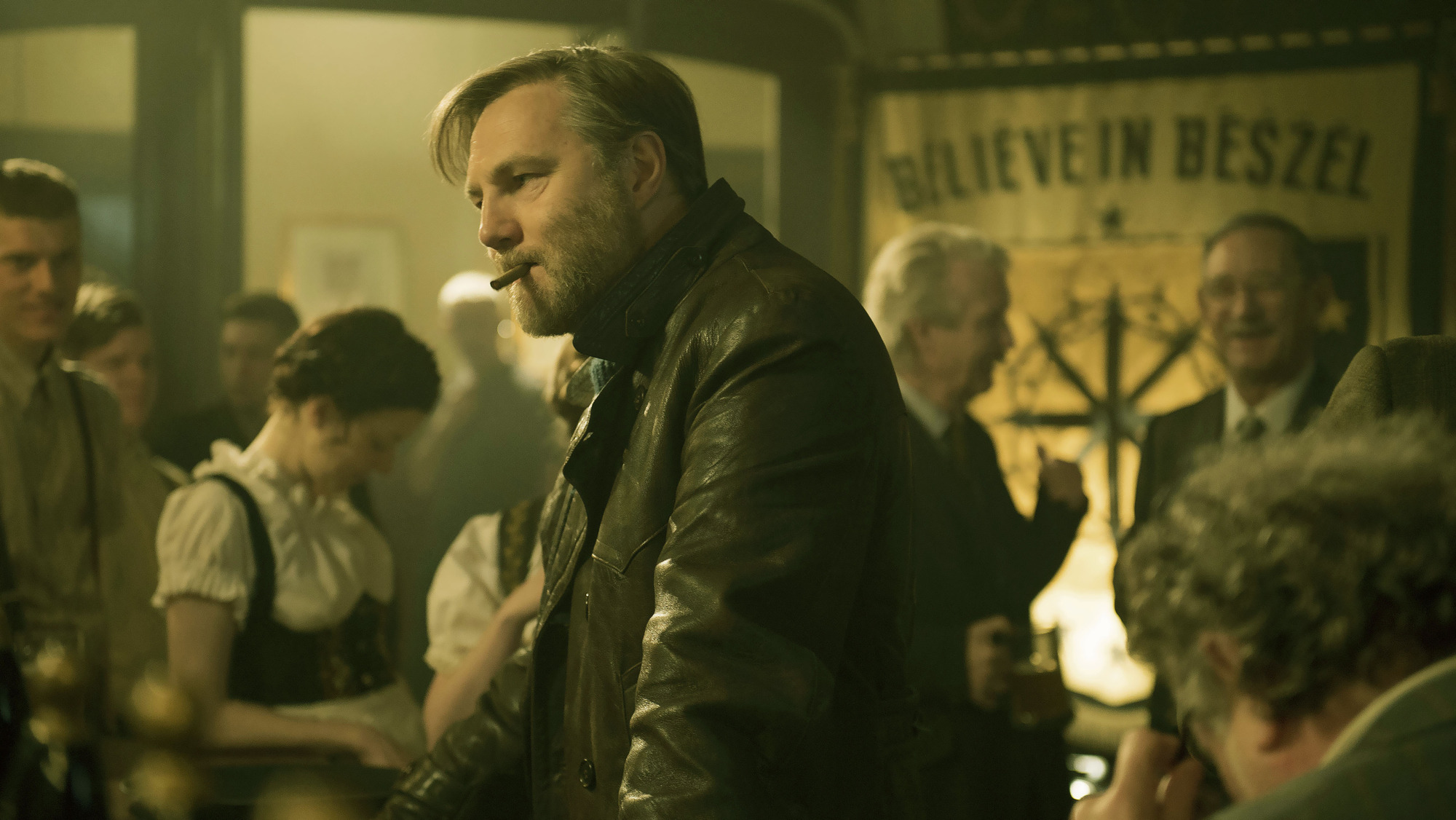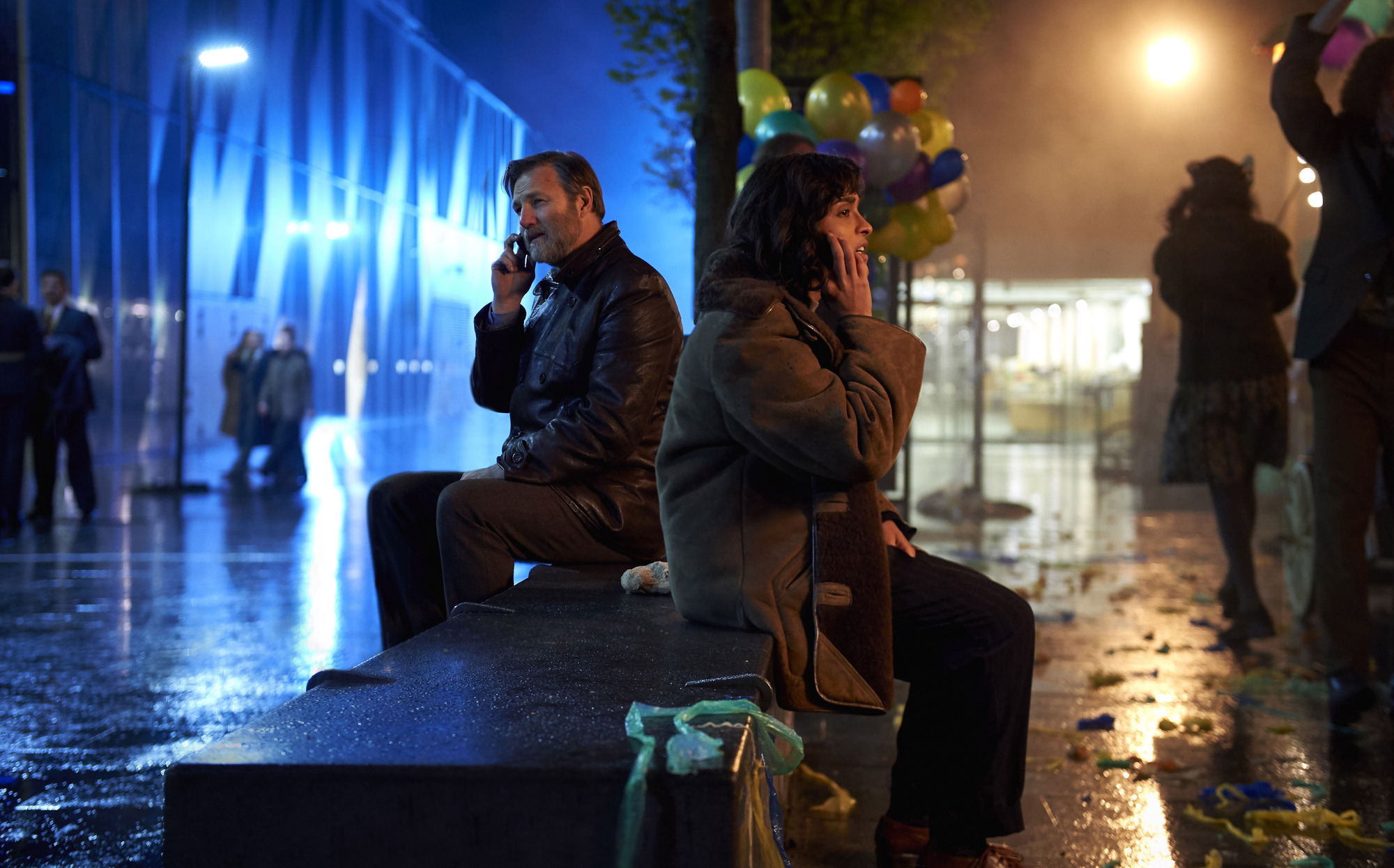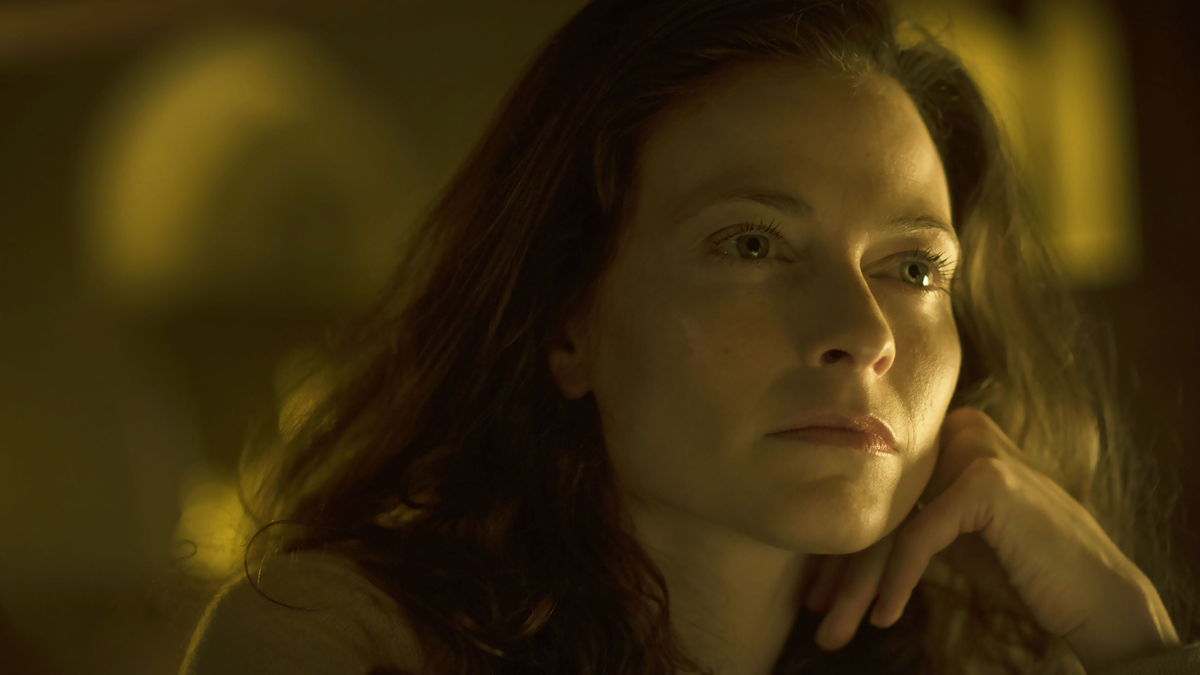The City & The City: A Noir Thriller From Another World
Starting tonight, BBC Two’s four-part weird fiction adaptation The City & The City is a unique crime series set in an uncanny world…
This article comes from Den of Geek UK.
It isn’t a big leap, says actor David Morrissey at the launch of new drama The City & The City, to imagine living in a place where you don’t see people who exist on the very streets we walk down. “We all live in cities like that,” he says. “We train ourselves to have invisible people at our feet all the time.”
Morrissey’s talking about wilful blindness to the lives going on around us—neighbours we live cheek by jowl with but don’t acknowledge, people sleeping rough. It’s learned behaviour, a combination of selfishness, self-preservation and habit. Nobody forces us to look the other way, we just do.
In China Miéville’s 2009 novel The City & The City, now adapted for BBC Two by Mammoth Screen, the residents of Besžel are forced to look the other way. Their city may occupy overlapping space with foreign city Ul Qoma, but Besz people are forbidden from seeing the other place, and vice versa. When a Besz train journey passes through Ul Qoma territory, passengers bow their heads and concentrate on seeing nothing. When a child’s toy strays from Ul Qoma into Besžel, pedestrians mustn’t see it, least of all pick it up and return it.
The skill of unseeing has been drilled into residents of both cities, shored up by government propaganda and continual reinforcement. “When in Besžel, see Besžel” plays a repeated recording. “When in Ul Qoma, see only Ul Qoma.” Insularity and awkwardness aren’t to blame here; this is state-mandated blindness. Citizens of each city are compelled to ignore the other on pain of ‘Breach’, the word alone striking fear into the population.
It’s a queer premise but one based in real experience, says Morrissey. London “is teeming with that type of sensibility,” he says. “The book pushes the idea that we’re not allowed to interact with certain people who live right here, right now. It’s an accentuation of that.”
This four-part series is the first China Miéville novel to be adapted for the screen. A published author for two decades, Miéville is a prolific writer whose imaginative, political novels are often described not as fantasy or sci-fi, but as “weird fiction”. The slippery inadequacy of that label might explain why it’s taken twenty years for his work to end up on screen. If people aren’t quite sure what to call it, they’re also not sure how to adapt it.
Point of view is Tony Grisoni’s answer to that question. For the Red Riding and Fear And Loathing In Las Vegas screenwriter, the process relied upon grounding the viewer inside a single point of view—that of Tyador Borlú, a police inspector in the Extreme Crime Unit, played by David Morrissey. Grisoni’s script “wouldn’t describe what [Borlù] wasn’t seeing. You would only hear about it, you’d hear discussion about it,” he explains.
“Occasionally when he’s in a very heightened state he might glimpse the other city, he might choose to transgress—but we see what he sees, for the most part. Now and again, you sit back and see the two cities in a more objective way but on the whole, the key for me was about point of view.”

Borlù’s identity as a detective provided more grounding for the audience, suggested producer Preethi Mavahalli. There was a huge desire to adapt Miéville’s work at Mammoth Screen, and “you could argue,” she says, “that The City & The City is the ideal one for adaptation. As a noir thriller, there was a way into it,” she says.
Grisoni’s initial impression was that any adaptation of the book would be a tall order. “I didn’t think you could do it, really. It’s very tricky, this idea of these two cities co-existing. It would have been easy had they been two universes, but they weren’t, the whole point was that it was a learned thing, you learned to unsee, to unhear, to unperceived the other city which is just there. That’s one thing in prose, but when you’re talking about a film or a TV show, you start to wonder what you see and how can you do that?”
China Miéville suggests that there are various different ways it could have been done. “I was open-minded except for what I knew I didn’t want. What I did say, I think quite explicitly is ‘this is the way I would be really unhappy if it was done’ and it wasn’t done that way at all.” The adaptation’s rendering of Besžel in particular, was particularly close to Miéville’s imagined version. “I was really struck by that and the colour scheme.”
Miéville read select of the many, many script drafts through the process, but otherwise kept a “respectful distance” from production. “Partly,” he explains, “because I could imagine that having a writer who is being very possessive and treating it as if it’s their book is a nightmare for everyone involved, partly because it’s a different project, it’s a different grammar. It’s a TV programme. I would always chip in and say ‘this I think is great, I’m not sure about this’ but ultimately I was always very clear it was their decision.”
The decisions made by Grisoni, Mammoth and director Tom Shankland, were good ones on the whole. “I was very concerned about the process of the shift,” says Miéville, about the visual differences between Besžel and Ul Qoma. Shankland and his design team came up with what Miéville describes as a “slightly off-kilter reflection, or water on glass, out-of-focus thing,” that wasn’t what he had in mind but he thought it “extremely effective.”

Were there any quibbles from the author? He jokes, “there are some pronunciation differences but I’m fairly relaxed about that—we’ll talk later!”
The out-of-focus look Miéville describes was achieved in a variety of ways – through special lens filters and post-production effects. Some was even achieved in camera through canny locations scouting. “We filmed some of it in Liverpool and some of it in Manchester,” says Morrissey, laughingly refusing to say which city stood in for crumbling, outdated Besžel and which for modern, gleaming Ul Qoma. “The reason we filmed in those two cities is because of that architecture, because the cities cheek by jowl have modern architecture and old Victorian architecture right next to each other. You have it all glass one side and Victorian buildings the other.”
The contrast between Besžel and Ul Qoma is coded by two contrasting colour schemes as well as the 1970s technology and crumbling Eastern bloc appearance of the former compared to the sleekness of the latter. They’re not intended to be counterparts for any real location, says Grisoni, refusing a comparison to divided Berlin. “I don’t think you want to pin it down too much, otherwise it loses its possibility. It’s not ‘here is East and here is West’, it ain’t that, but it’s playing with those ideas.”
A lot of work was done to ensure that the story wasn’t confusing for an audience, says Mavahalli. “You need to know that when you go from one city to another city—even if you’re getting a glimpse of them—that you know which is which city.”
To help the audience find their bearings, a new character was invented by Grisoni, Borlú’s wife Katrynia, played by Lara Pulver. The invention of Katrynia was “a big step forward in terms of how it was going to work for screen,” says Mavahalli.

“There was a lot of exposition,” in the book says Grisoni, “it’s a tricky bit of business to pick your way through that and distil it.” His approach was a simple one: trust the viewers’ intelligence. “What you don’t do is you don’t imagine that the audience is one thing, says Grisoni. “You don’t make a big mistake and imagine that the audience is dumber than you.”
The City & The City isn’t a drama that spoon-feeds you story and plot, agrees Morrissey. It demands something of its audience, asking them to “engage with it on many levels.” Actor Mandeep Dhillon, who plays Borlù’s colleague Constable Corwi, says she found the script “confusing but amazing.” It was a particularly tough one, says Grisoni, “because there are such high-end concepts.” “There was a long period of writing because all the time it was being distilled.” He was approached by Mammoth to adapt the novel in late 2013, and “many, many versions of the script” later, here we are.
Where, exactly, is here? Would Grisoni call The City & The City sci-fi, as opposed to the social realism for which he’s better known? “I really hate that expression!” he says. What would he prefer? “Nothing. It’s not strictly speaking sci-fi. There was a name, weird fiction, the new weird… Let’s not put labels on it. It’s just stories!”
The City & The City starts on BBC Two at 9pm on Friday the 6th of April.
